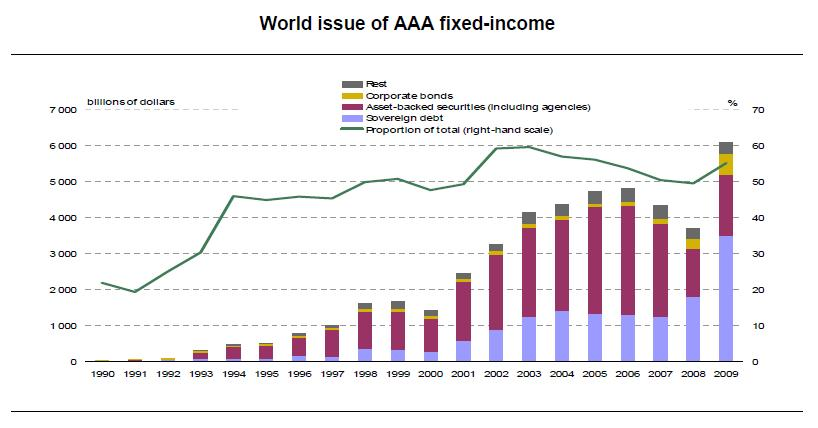Media coverage of S&P downgrade threat;
• Reuters – S&P threatens downgrade of U.S. financial companies
Standard & Poor’s on Friday raised the pressure on debt negotiators in Washington, saying it could downgrade insurers, securities clearinghouses, mortgage agencies and a laundry list of other firms without a deal soon to lift the debt ceiling and cut the deficit. While S&P had already made clear it could downgrade the United States’ sovereign credit rating, the Friday move struck directly at the heart of the financial system, raising the prospect of knock-on effects should the country exhaust its ability to borrow to pay bills. The Treasury took the last available step Friday to try and extend that borrowing capacity. S&P on Friday put on review for possible downgrades a range of powerful financial firms — many of them little known to the public but crucial to the country’s financial infrastructure. U.S. government securities are central to the operations of most of the companies cited. They include the Depository Trust Co, which facilitates payment transfers among major banks, as well as several Federal Home Loan Banks and Farm Credit System Banks. They also singled out Fannie Mae and Freddie Mac, the two government-sponsored enterprises that are central to the residential mortgage market. S&P characterized its targets as “entities with direct links to, or reliance on, the federal government.” Separately, the agency said the four remaining U.S. nonfinancial companies with triple-A ratings were not affected by the downgrade threat.
•The Associated Press – S&P warns it may downgrade Fannie, Freddie credit
Standard & Poor’s warned mortgage giants Fannie Mae and Freddie Mac on Friday that they may lose their top credit ratings if lawmakers don’t raise the U.S. government’s borrowing limit in time to avoid a default. S&P said government-controlled Fannie and Freddie, along with certain Federal Home Loan Banks and Farm Credit System Banks, could also default on their debts, given each institution’s “direct reliance on the U.S. government.” The rating agency this week threatened to lower the U.S. government’s credit rating if the White House and Congress can’t agree to raise the $14.3 trillion borrowing limit and avoid a default in the coming weeks. It said there was at least a one-in-two likelihood that it will lower the rating within the next 90 days.
Comment:
Essentially S&P has put every AAA rating that assumes a government backstop on watch. The main reason is the potential for a spike in volatility if no debt deal is reached. Critics will argue that S&P has never used volatility as a reason for a downgrade before. Even when volatility was rampant during the 1987 stock market crash, the Gulf Wars, September 11, the popping of the tech bubble or the 1,000 points daily gyrations in the Dow Jones Industrial Average in late 2008, this was not given as a reason for a downgrade.
If the potential for volatility is a new standard to put every government related AAA rating on credit watch, will S&P be doing this regularly? If they are making a political statement, will they reinforce the idea that ratings are arbitrary and undermine their already sagging credibility?
So why is S&P doing this? If volatility is reason enough for a downgrade, why not put every AAA in Europe on credit watch for the same reason?
•The Financial Times – Ratings easy to criticise, harder to exorcise
A similar recasting has happened in finance, too. In the decades leading up to the financial crisis, global debt markets grew as never before precisely because it was assumed that risks could be measured and managed. At the centre of this transformation were credit ratings. A simple proxy for risk, the use of credit ratings allowed regulators, banks and investors to have an easy-to-use reference point. This had benefits, and fuelled growth across the globe. But the existence of ratings led to sloppy risk assessments: the work was subcontracted to the likes of Fitch, Moody’s and Standard & Poor’s. The agencies have had no shortage of critics for failing to spot risks in the repackaging of billions of dollars of risky mortgages into top-rated mortgage-backed securities. Now, they are again in the spotlight. European politicians have attacked them for recent downgrades of eurozone sovereigns.
•The Atlantic – Should We Worry About a AAA-Rated Debt Bubble?
Investor love risk-free bonds, but is it possible to have so many of them?
In 1999, about $1.5 trillion AAA-rated securities were issued globally. In 2009, AAA-rated issuance peaked at over $6 trillion. Are we in bubble territory? … Tracy Alloway at the Financial Times Alphaville blogs says that this could be the most important chart in the world right now. Is this a clear indication that the rating agencies and investors are both out of their minds? The chart shows two things. First, AAA-rated security issuance has grown at an extremely rapid pace over the past decade. Second, the portion of bonds that are AAA-rated has also grown significantly, to more than 50% of all fixed-income bonds issued, from around 20% in 1991.*




What's been said:
Discussions found on the web: